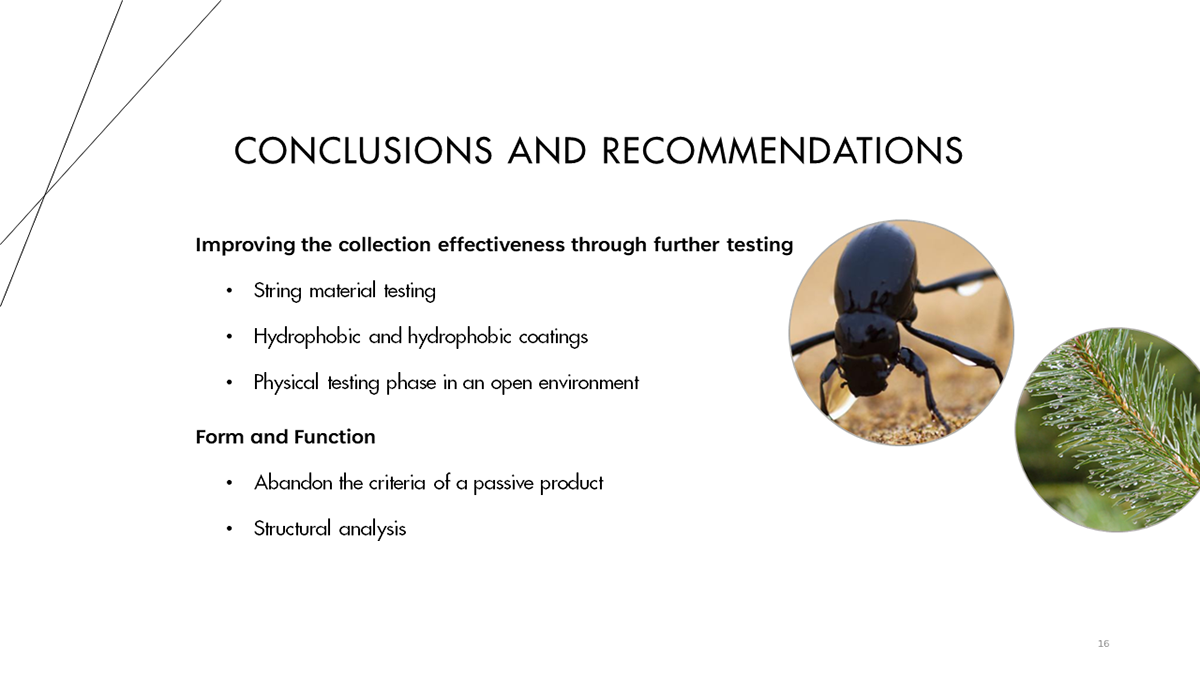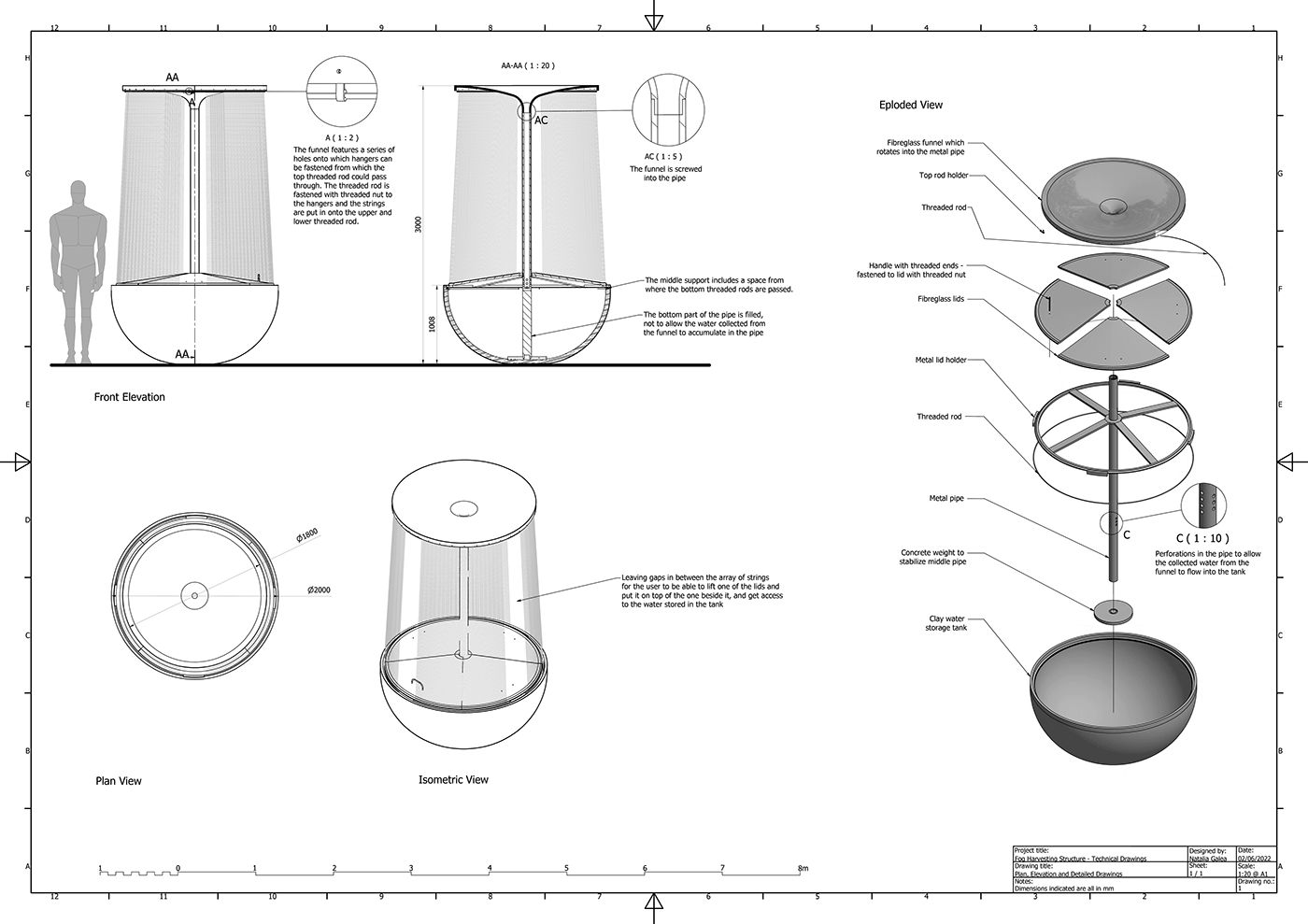




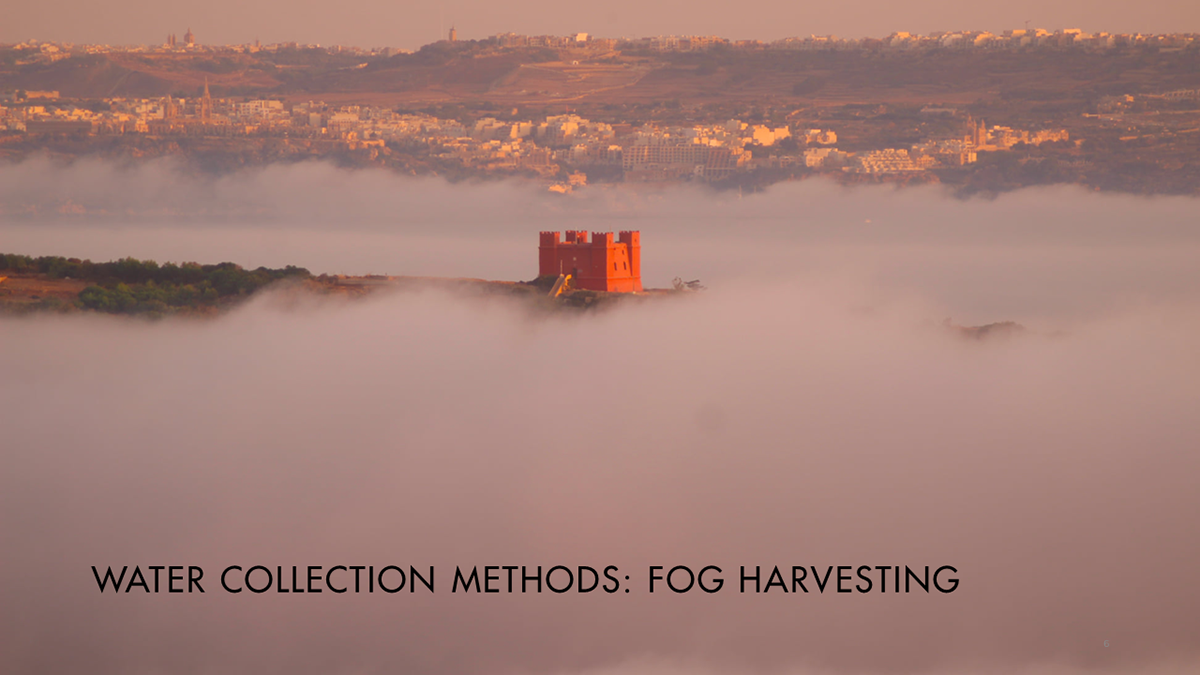
The second water collection method studied was fog harvesting. By definition, fog is a cloud that touches the ground surface. It is formed naturally through the cooling of air to below its dew point. In principle, the amount of water vapour contained in the air is directly proportional to the air temperature, therefore, if the air temperature decreases, the excess water vapour from the air condenses to form fog.

Fog collectors differ in their designs with regards to their size and shape, as well as the mesh material used. Typically, the mesh used is polypropylene or polyethene mesh with a shading coefficient of 35%. The Raschel mesh is commonly used, and it is woven in a triangular pattern enabling rapid run-off of the water.
A study has shown that the Raschel mesh, can collect 160% more fog water than the FogHa-Tin at at low wind speeds less but it does not perform that well at higher wind speeds. The stainless-steel mesh collected more fog water than Raschel mesh at all wind speeds).
Collection efficiency increases with larger surface areas, together with higher fog droplets diameter and increased wind speed. Also, narrower mesh fibres are more likely to collect fog droplets suspended in the air.
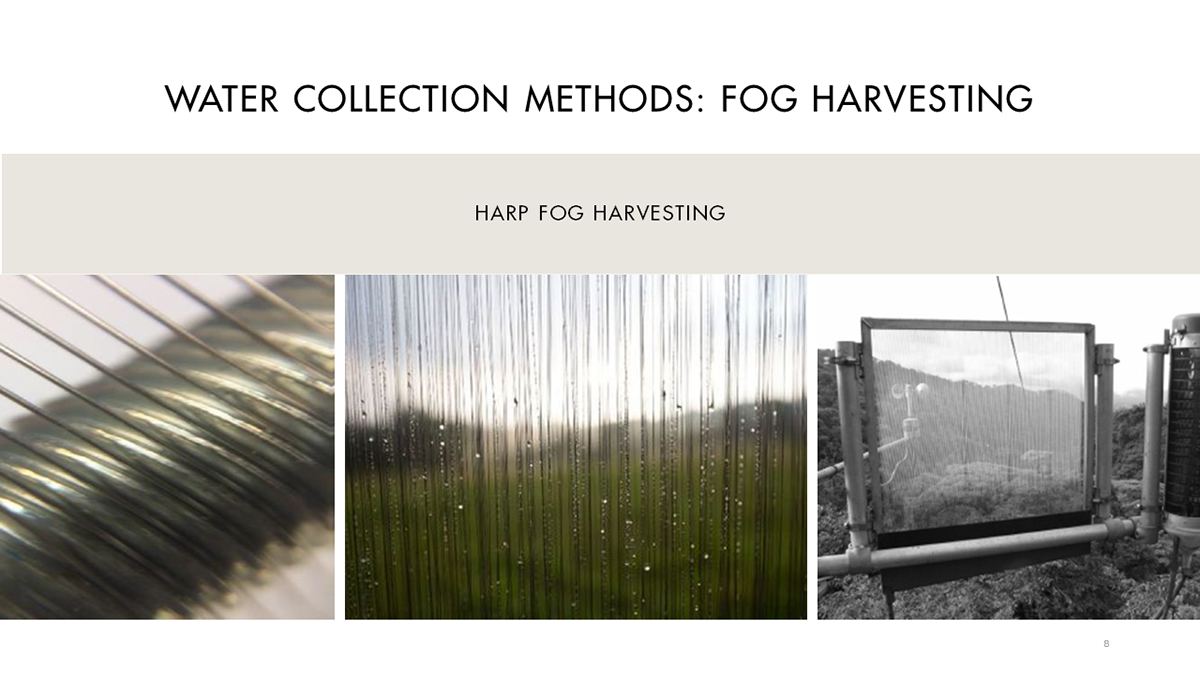
In another study “fog harps” comprising of an array of fine, vertically oriented wires were developed. Through their experiment, it was demonstrated that the wire harps can harvest 3 times more fog than the mesh netting: the smaller the diameter of the wire, the better the collection rate. The wires allow the harp to avoid clogging even at small scales, unlike meshes where orthogonal wires impede the contact line.
Unlike similar studies which utilise superhydrophobic meshes to promote droplet shedding, their harp design utilises untreated metal wires that are durable for practical long-term use.
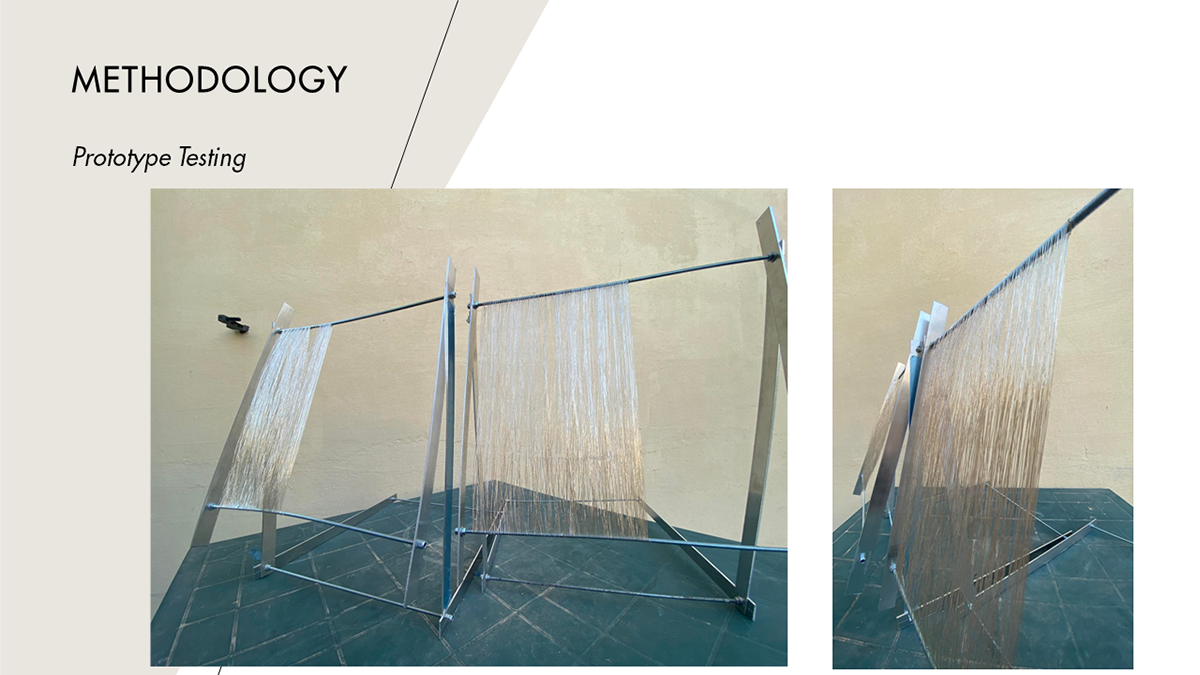

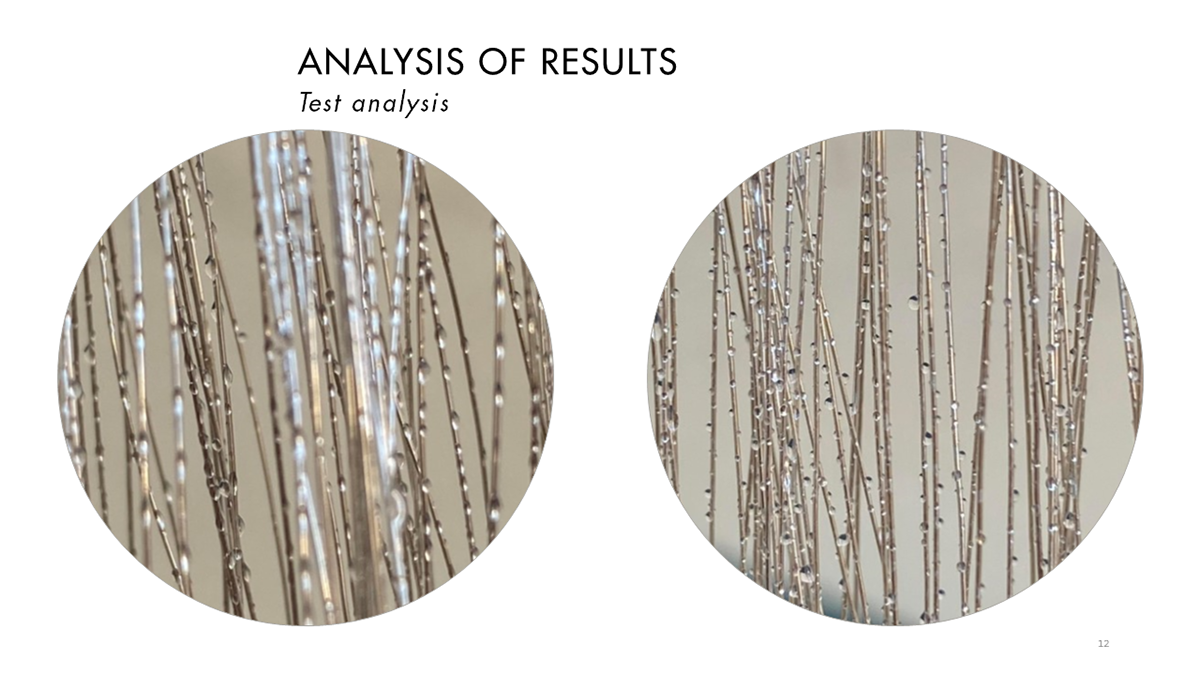
The copper wire covered in silver, with a diameter of 0.3mm.
The hydrophobic coating used is a spray for car bodies while chrome gel nail powder was applied as a hydrophilic coating. Since the application of the chrome powder was applied to strings and not to a flat surface, this did not adhere to the strings, not affecting the drop formation.
The tests were conducted in an open roof area in an urban setting. After several nights no droplets were forming on the strings. This could be due to the weather conditions, the thermal properties of copper and silver, or due to location. The prototypes were sprayed at a fixed distance of 0.50 metres with a fine mist, with the same number of sprays. The hydrophobic coatings enhanced drop wise formation on the array of strings. When combined with a hydrophilic coating, the droplets would trickle down faster towards the storage tank.

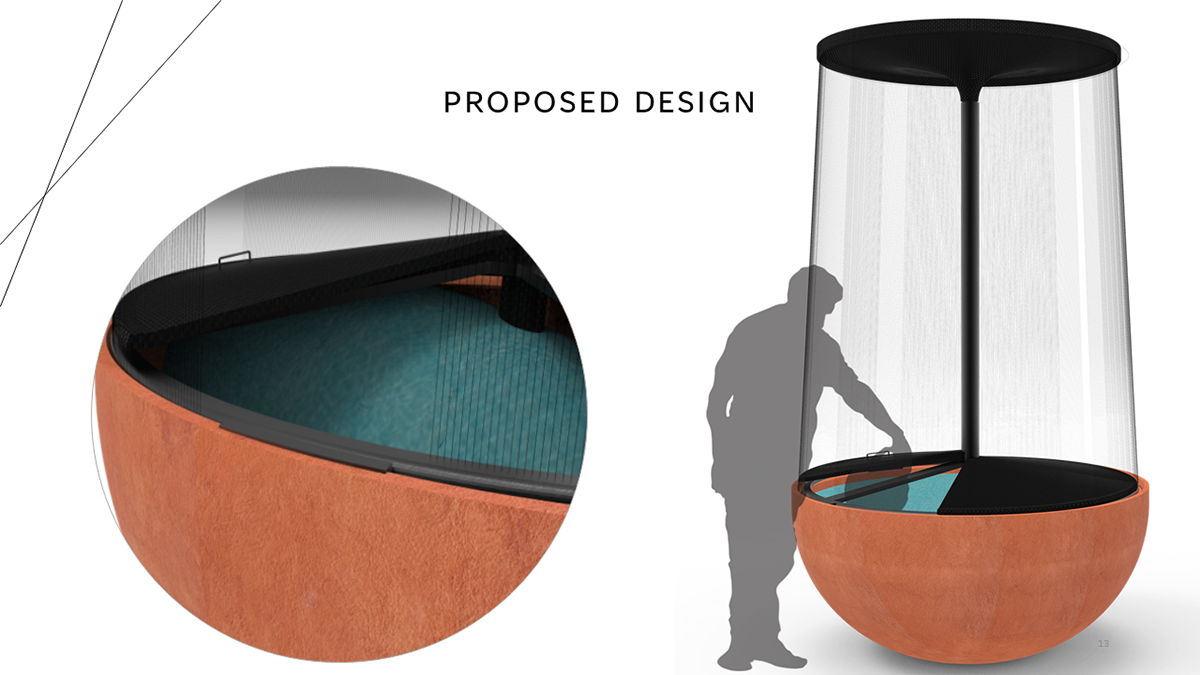
The final proposed project incorporated three methods of freshwater harvesting: rainwater, fog and dew. The conical funnel at the top would provide a catchment for rain, while the strings harvest fog, however, due to the strings’ material properties, the product would also be able to harvest dew.

As the design developed, it was modelled for easy disassembly for the product to be easily maintained. The strings’ installation is divided into sections, allowing for these to be changed or upgraded if needed The lids are designed to be four separate pieces that could be put one on top of the other to uncover the storage tank. This way, the storage can also be cleaned from any dust and debris deposited on the collection surface and is washed off by the fog water.

